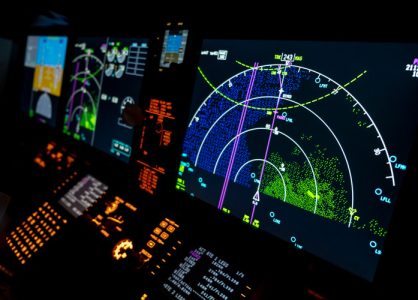Performance-Based Navigation Background
Aircraft navigation specifications have traditionally been defined in terms of the kind of sensors and equipment used for navigation purposes. For example, ground-based navigation beacons or waypoints. When additional requirements for onboard navigation performance monitoring and alerting are specified, it is called a required navigation performance (RNP) specification. Without that extra requirement, it is simply referred to as area navigation (RNAV).
For performance-based navigation (PBN), the operational requirements are the first navigation requirements defined. This is when various options in available technology and navigation services are considered. PBN requires that aircraft RNP and RNAV systems be described in terms of accuracy, integrity, continuity, functionality, and availability based on the proposed operation, the airspace, and the appropriate navigation infrastructure.
Navigation Specification Levels
When flying a PBN procedure, there are two options: a procedure with RNAV or one with an RNP specification. The only difference between the two is that RNP requires onboard performance monitoring and alerting; RNAV-only aircraft cannot check its accuracy.
The meaning of the term RNAV 10 is that the aircraft flying on a route or doing a procedure must stay accurately on track within a 10-mile accuracy, 95% of the time. RNAV 5 is within 5 miles, so as the number gets smaller, the accuracy increases. RNP 4 through 0.3 must have alerting capabilities and are all space based.
Advantages of PBN
Performance-based navigation is better than sensor-specific navigation options for the following reasons:
- Reduces the need to maintain sensor-specific routes and procedures, which can be very costly.
- Eliminates the need to develop sensor-specific operations with each new advancement in navigation systems.
- Allows for a more efficient use of airspace, including fuel efficiency, noise complaints, and the placement of routes.
- Clarifies how RNAV systems are used.
- Provides a limited set of navigation specifications that are intended for global use, which facilitates the operational approval process.
RAIM and SBAS
RAIM and SBAS are systems that allow navigation systems to be cross-checked for integrity and accuracy. This is necessary for PBN approaches. Receiver Autonomous Integrity Monitoring (RAIM) describes the ability of the aircraft equipment to cross-check the integrity of the GPS signal it receives. Basic RAIM requires 5 satellites for the cross-check (6 if one of the satellites needs to be isolated). If you lose the signal for any of the satellites required, you no longer have RAIM capability and, therefore, must change your planned navigation options by selecting a procedure with a lower level of required navigation performance.
Satellite Based Augmentation System (SBAS) uses the following to determine the precise aircraft position:
- GNSS satellite constellation.
- Geostationary satellites.
- Ground stations.
The future of in-flight navigation is exciting. As ground-based navigation aids are slowly phased out, we’re likely to see approach capability go from 2-3 dimensional to 4 dimensional. Onboard performance monitoring and alerting will be developed in the vertical plane and angular performance requirements for approach and landing will be included in performance-based navigation. Experts are working on support for helicopter operations too.









